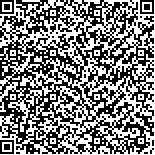下载中心
优秀审稿专家
优秀论文
相关链接
摘要

生态系统遥感以生态系统为对象,研究生态系统类型、格局、功能、服务及其过程的遥感解析方法,发展遥感驱动的生态系统服务评估方法,揭示贯穿在生态系统类型、格局、功能、服务中的深层次生态系统过程与隐性表现。新一代卫星和传感器为生态系统遥感提供了全新的数据源。生态系统类型和格局辨识能力还有待提高,从而对智能信息提取提出了更高的要求。生态系统功能监测方面还需要充分挖掘遥感数据的深层隐含特征,发展出一些易于处理且能够反映生态系统功能特征的新指标。生态系统服务评估方面仍需,发展遥感驱动的新的生态系统评估模型。与云平台的结合是生态系统遥感的未来发展方向,为全民参与生态环境保护及监督提供了契机,也可为重大工程的生态效应评估提供更丰富的数据支撑。
Remote sensing for ecosystem mainly focuses on types and patterns identification, functions monitoring, services assessment and processes analysis of ecosystem by remote sensing based methods. The new generation of satellites and sensors provide additional earth observation data sources for ecosystem monitoring. However, the identification capability of ecosystem types has yet to be improved, which put forward higher request to intelligent information extraction (in the Big Data Era). For ecosystem function monitoring, it is necessary to fully exploit the hidden features of remote sensing data and develop new indicators that are easy to process and reflect the functional characteristics of ecosystem. In addition, advanced models are needed to better assess ecosystem services by analyzing the implicit process and performance of ecosystem. Combination with the cloud platform is the future trends of remote sensing for ecosystem, which will provide opportunities for the public participation in ecological protection, and will provide more data support for ecological effects assessment of key projects.

